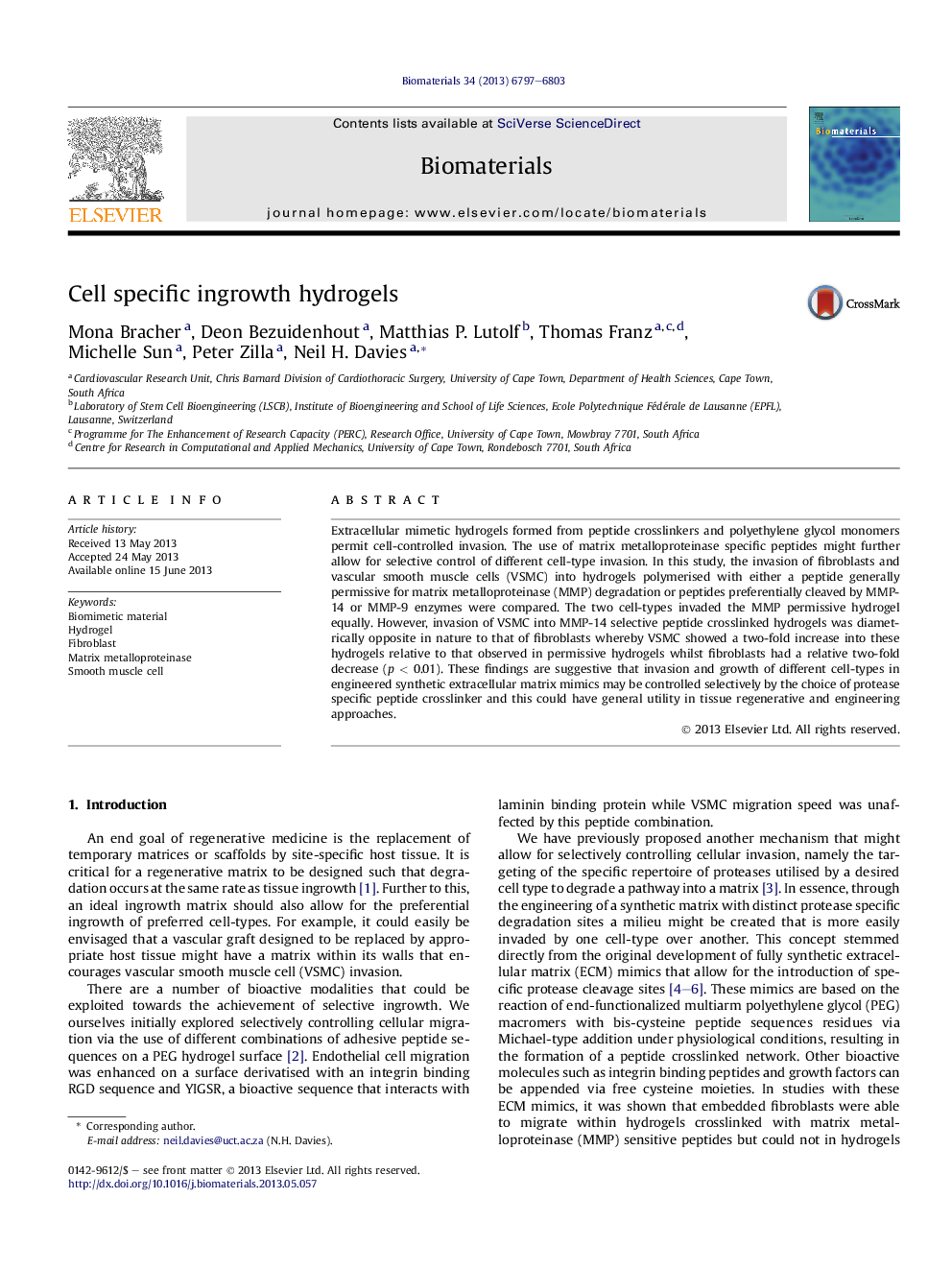| Article ID | Journal | Published Year | Pages | File Type |
|---|---|---|---|---|
| 10228919 | Biomaterials | 2013 | 7 Pages |
Abstract
Extracellular mimetic hydrogels formed from peptide crosslinkers and polyethylene glycol monomers permit cell-controlled invasion. The use of matrix metalloproteinase specific peptides might further allow for selective control of different cell-type invasion. In this study, the invasion of fibroblasts and vascular smooth muscle cells (VSMC) into hydrogels polymerised with either a peptide generally permissive for matrix metalloproteinase (MMP) degradation or peptides preferentially cleaved by MMP-14 or MMP-9 enzymes were compared. The two cell-types invaded the MMP permissive hydrogel equally. However, invasion of VSMC into MMP-14 selective peptide crosslinked hydrogels was diametrically opposite in nature to that of fibroblasts whereby VSMC showed a two-fold increase into these hydrogels relative to that observed in permissive hydrogels whilst fibroblasts had a relative two-fold decrease (p < 0.01). These findings are suggestive that invasion and growth of different cell-types in engineered synthetic extracellular matrix mimics may be controlled selectively by the choice of protease specific peptide crosslinker and this could have general utility in tissue regenerative and engineering approaches.
Related Topics
Physical Sciences and Engineering
Chemical Engineering
Bioengineering
Authors
Mona Bracher, Deon Bezuidenhout, Matthias P. Lutolf, Thomas Franz, Michelle Sun, Peter Zilla, Neil H. Davies,
